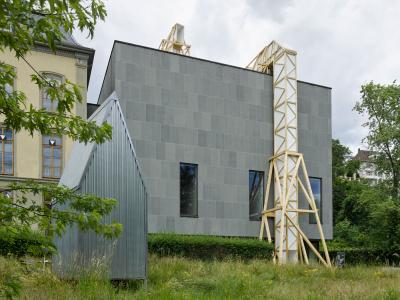
RITZWIRTH anderswar
The Biel duo RITZWIRTH has a unique position in the Swiss art scene. Katia Ritz (1973, CH) as an architect and Florian Hauswirth (1976, CH) as an industrial designer not only realise architectural projects, but have also been working together on installations since 2009. Central to their work are interventions that are directly related to their surroundings and are conceived very situationally and differently in each case. In their first large solo exhibition, they present past projects as well as a monumental installation that reinterprets the functions of the Kunsthaus building.
The title of the exhibition, anderswar (Old High German for «elsewhere»), indirectly includes the term perception and implies a possible otherness or a sense of departure. Through their free approach as well as their hybrid practice between art, design and architecture, RITZWIRTH change the respective location in a surprising way. In the Altbau, they present projects from the last 12 years using installation fragments, design models, sketches and material samples, as well as photographs and film or audio recordings. Among them is a remarkable range of projects, from scenographic works, such as for the Zentrum Paul Klee or the Hohe Kasten mountain station in Appenzell, to the Raketen Regenwasser Silo (2018) (rocket rainwater silo) on the Gurzelen site in Biel, the extension of the Coupole Biel, which can be used for various activities, to a window installation consisting of envelopes for the Ishinomaki Laboratory in Tokyo. They react above all to urban environments, such as at les Urbaines in Lausanne with an organ that picks up the sounds of rainwater running off and emits them into the urban space, or in the Spazio Lampo space in Chiasso, where a hunter’s hideout in the city highlights the problem of migration and the visitors become peepers and spies. Or, in the context of the sculpture triennial Bex & Arts, they intervened in nature by tearing concrete casts out of the ground, thus demonstrating human intervention in nature. RITZWIRTH’s fluid combination of different materials, approaches and techniques enables a multifaceted approach. As a complement to the spatial, sound is repeatedly integrated into their work.